Air Pollution in Berlin: Make the invisible visible
Written on July 10th, 2021 by Johanna Hartmann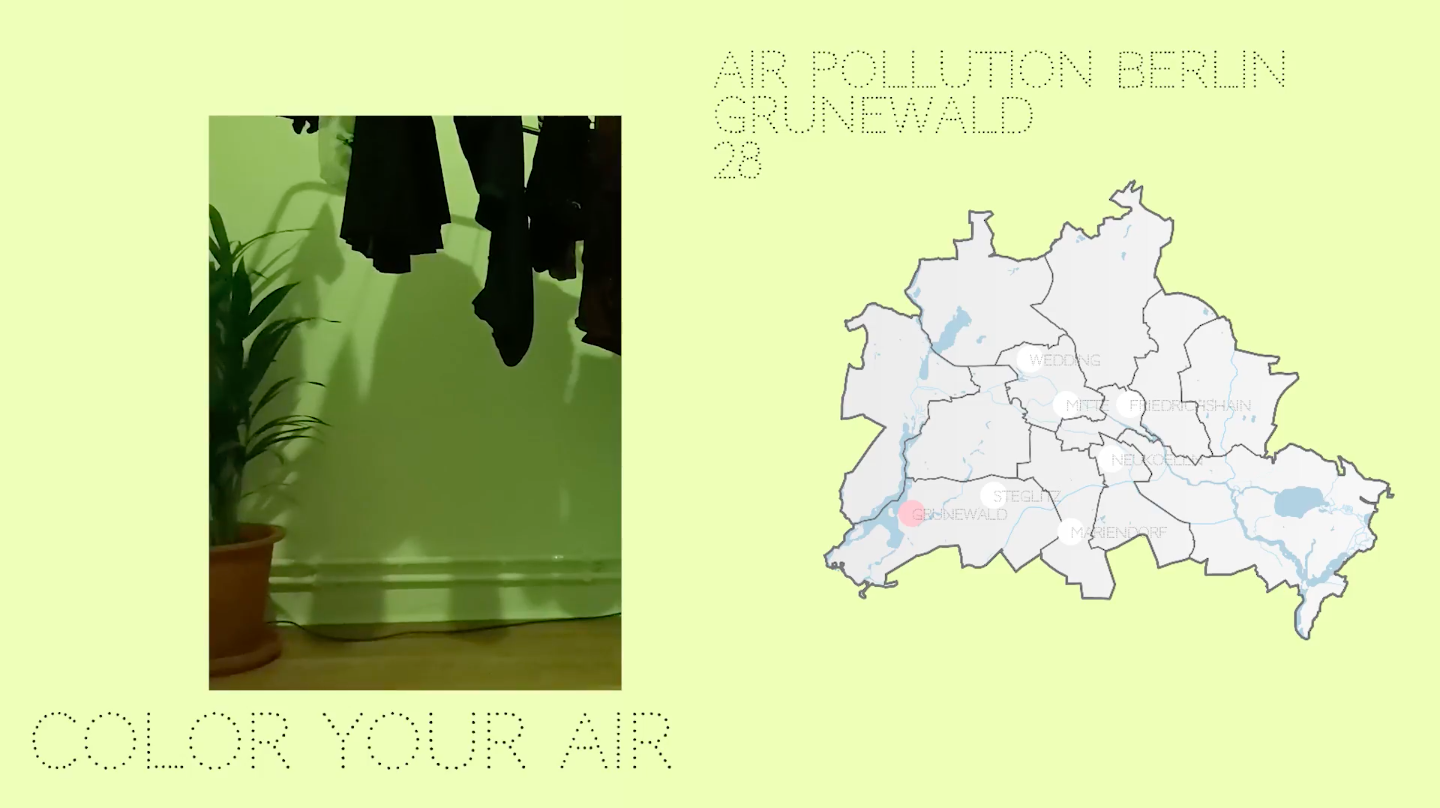
Abstract
Do you actually know the quality of the air you breath in? Air Pollution is invisible. And it is always around us in Berlin. This project makes the invisible visible and colors the light around you according to the quality of the air. How does it work? With a smart light bulb, that you connect to the app.
Project description
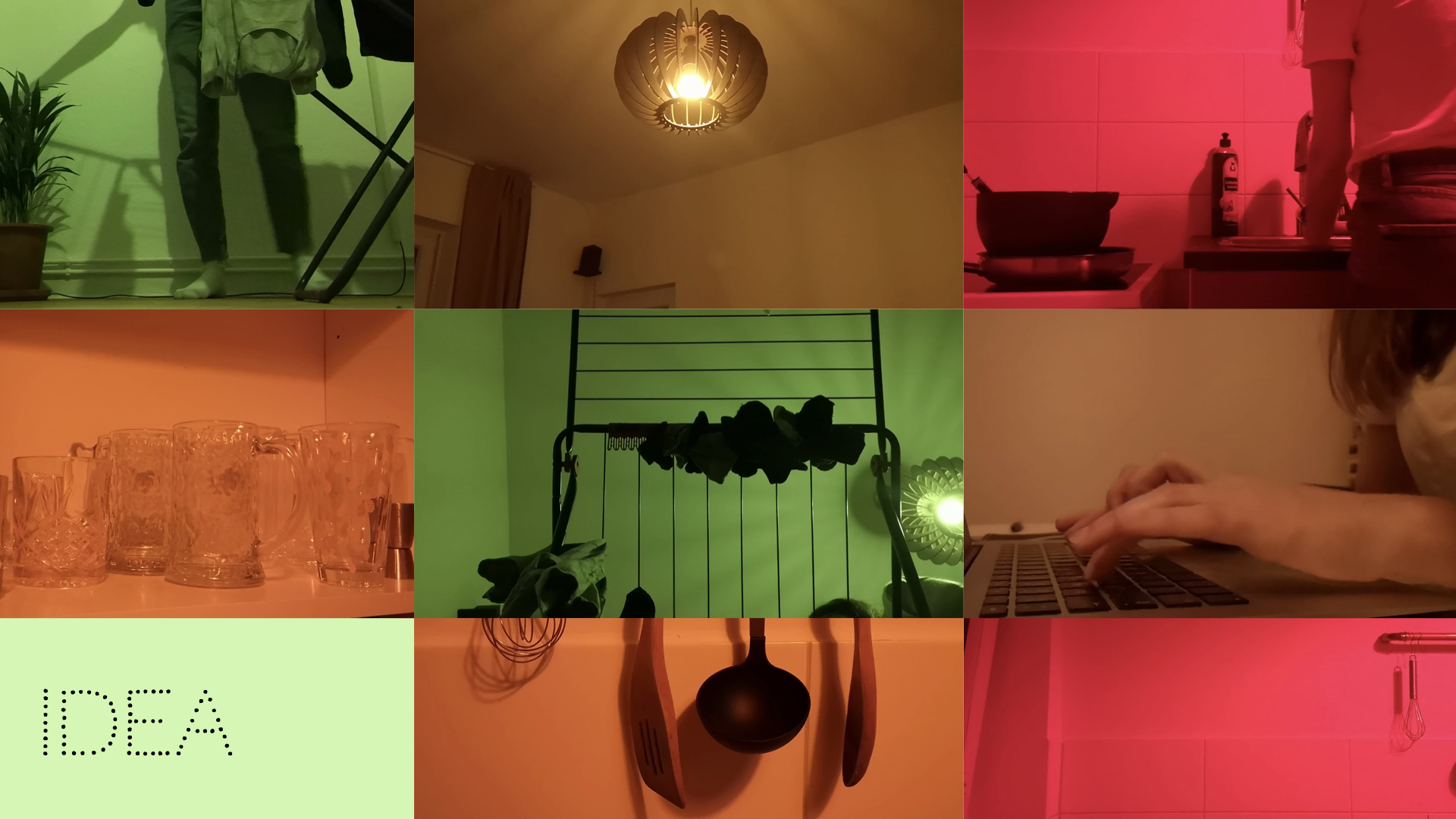
Although air pollution is a ubiquitous problem, it remains invisible to us. This app makes the invisible visible. It does this by colouring the air around us - in a way that reflects the air quality. Here, I focus on the air pollution index (AQI) in Berlin. The app retrieves the current value of each district and calculates a colour to match the quality. That means that the lamp lights up green when the air quality is good and red as soon as it is unhealthy for sensitive groups. The classification here comes from a WHO recommendation. The app works with the IKEA Tradfri gateway, to which an RGB light bulb must then be linked. With the help of a library, my app controls the light, so that the colour changes. If you don’t have an RGB bulb, it is not a problem. If it is possible, the app dims the light bulb if the air quality is poor and. In any case, the background colour of the app changes accordingly to give immediate feedback. So it is possible to use it without an RGB bulb.
The app aims to create awareness for air quality and air pollution in Berlin by making the invisible problem visible.
Here is a link to the visual documentation
Interface
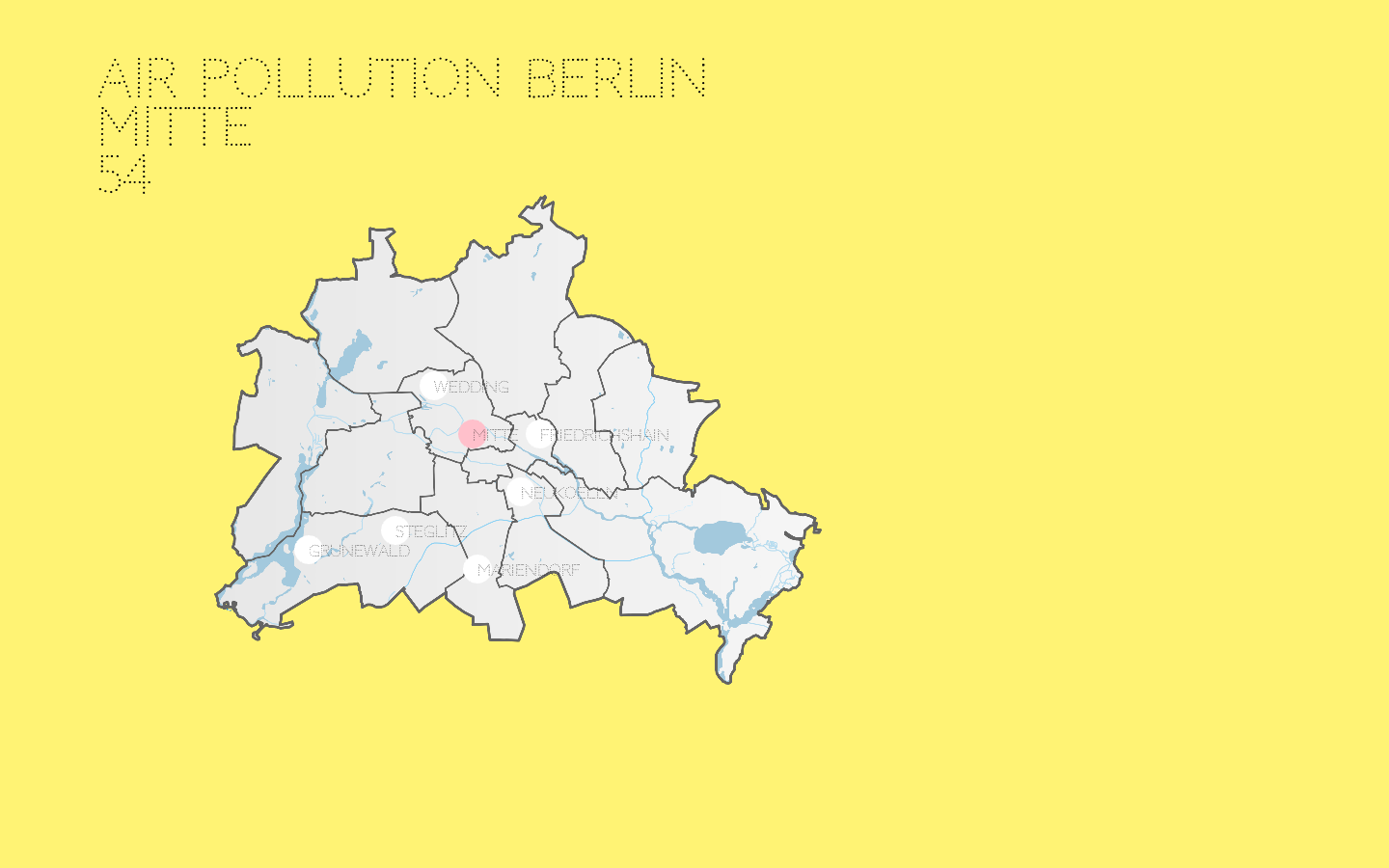

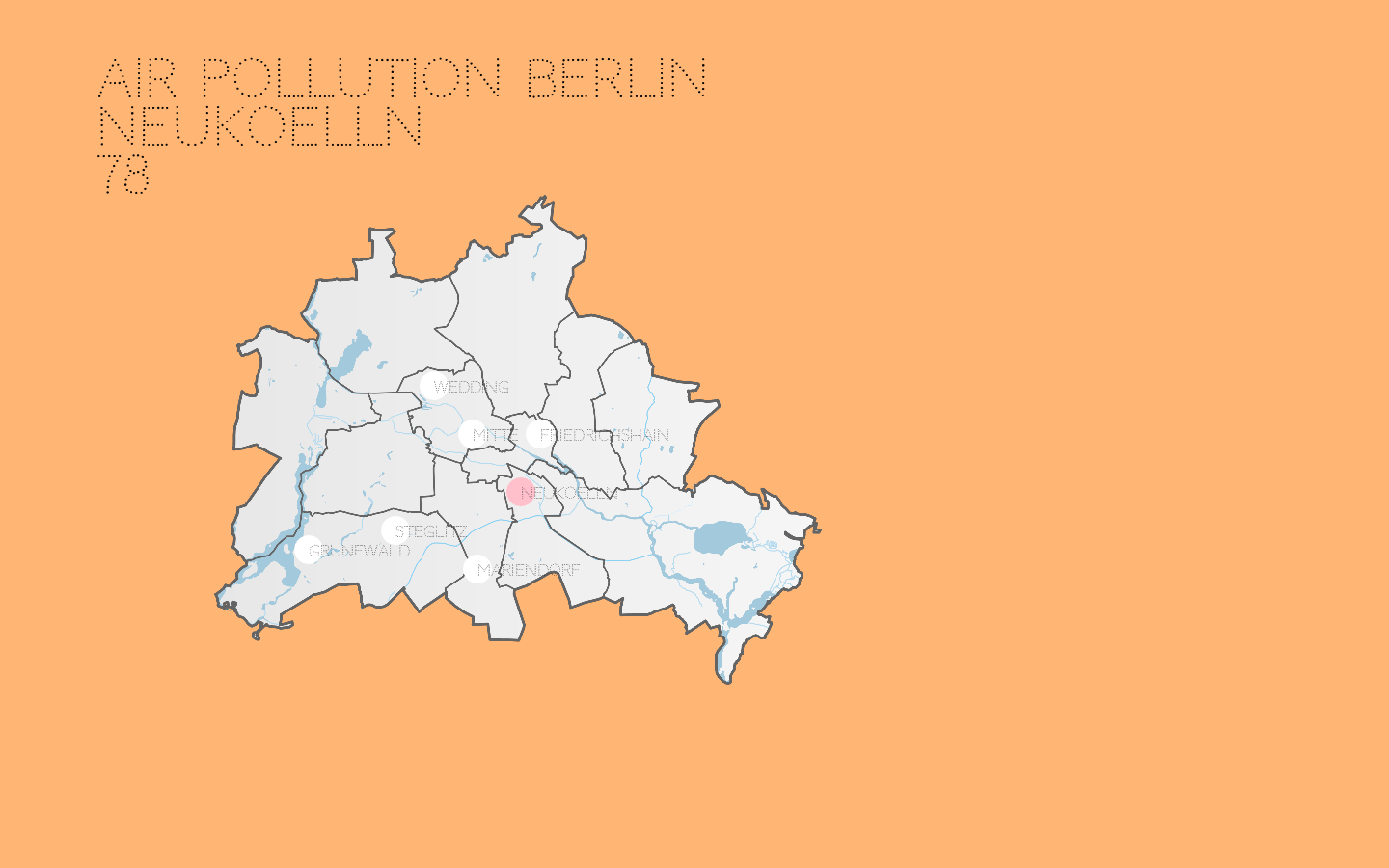
Interface and Smart Light
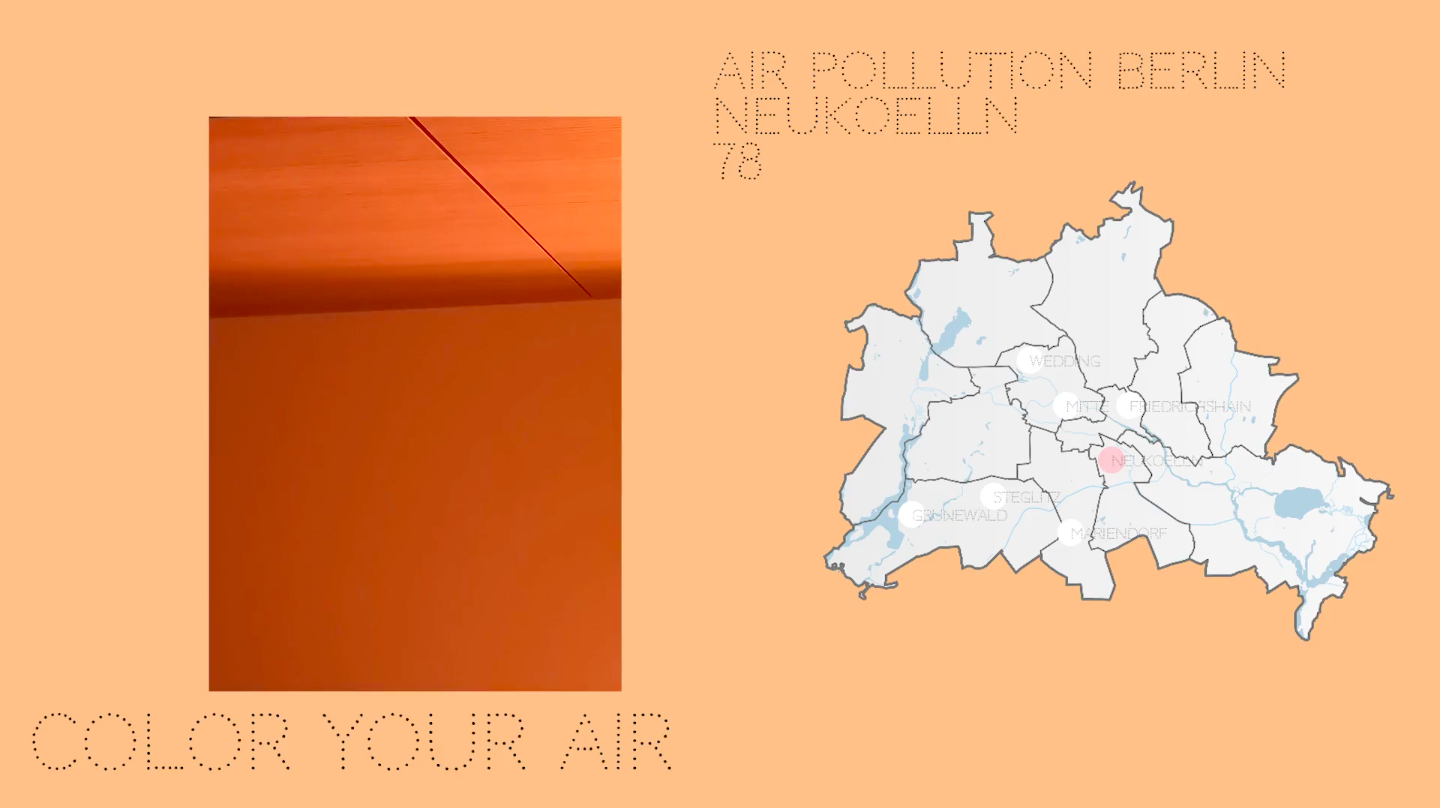

Implementation
I implemented it in OpenFrameworks and Python.
The first step is to use the gui to specify the location from which the airpollution should be determined.

From this location the app determines the airpollution via an API.
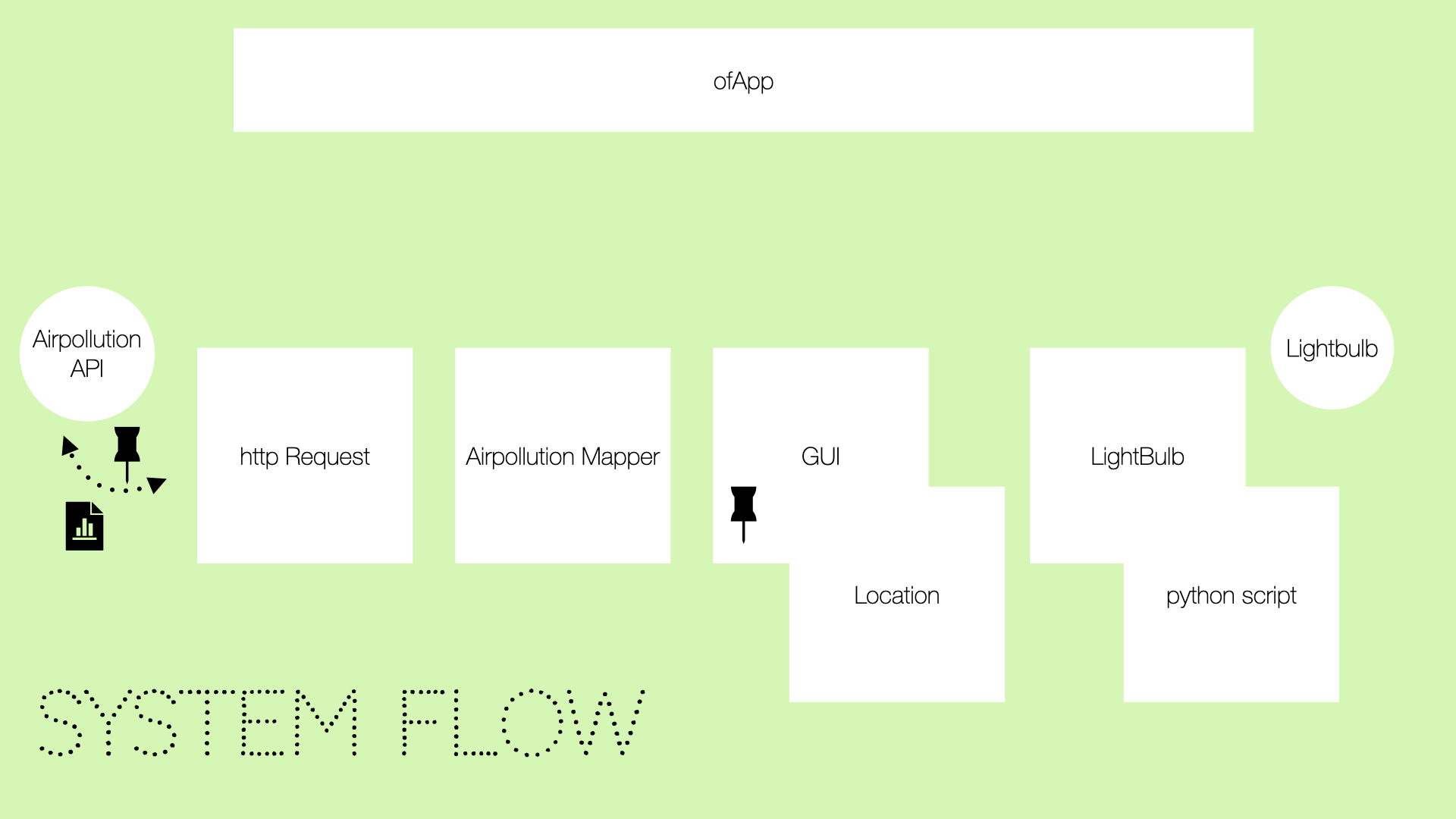
This value is then converted to a color for the background and a color for the lamp.
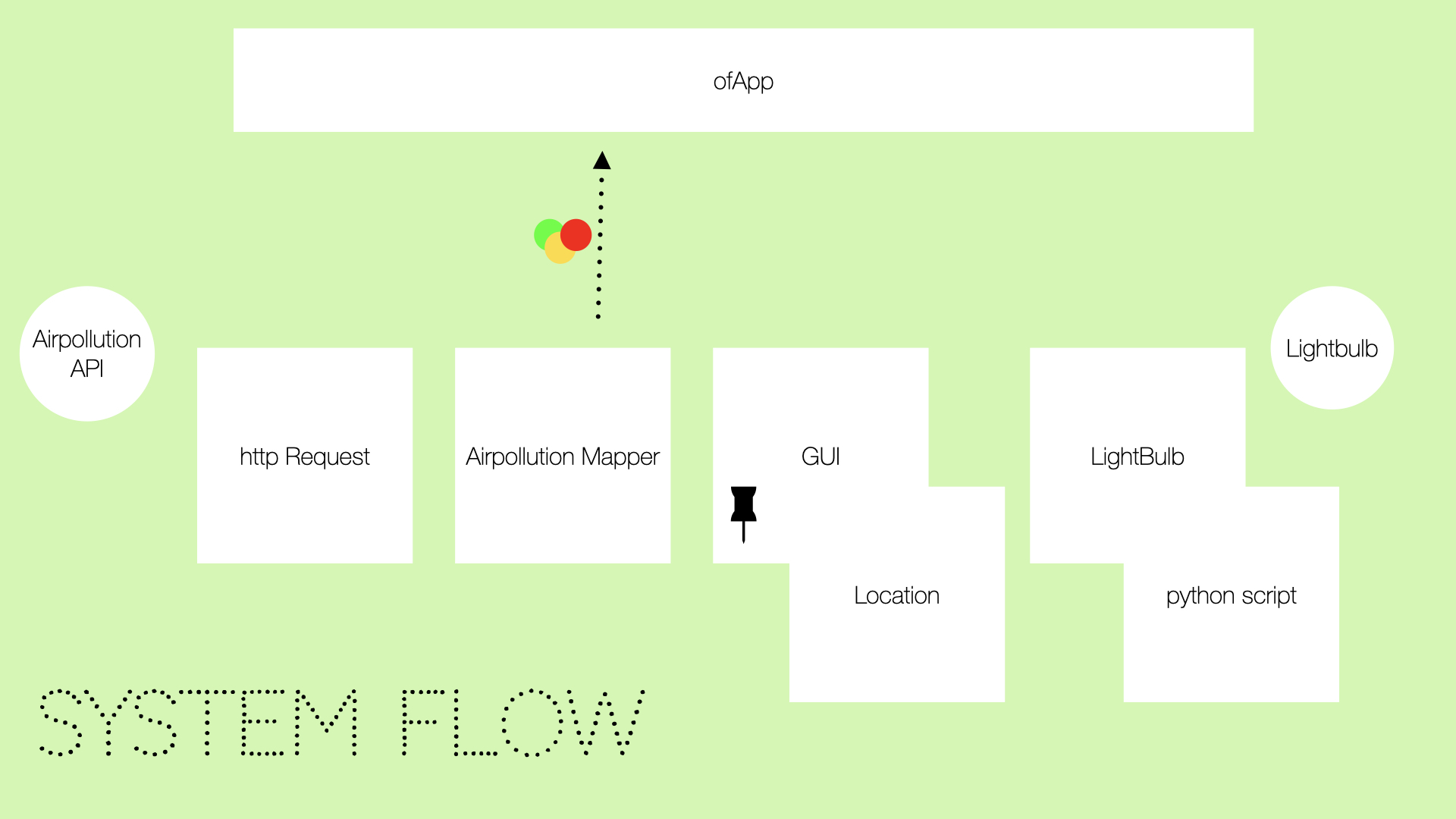
The lamp is controlled with the Pytradfri library. This library allows to control IKEA gateways and their associated devices with Python. Thus the color of the lamp is passed as argument into a Python script.
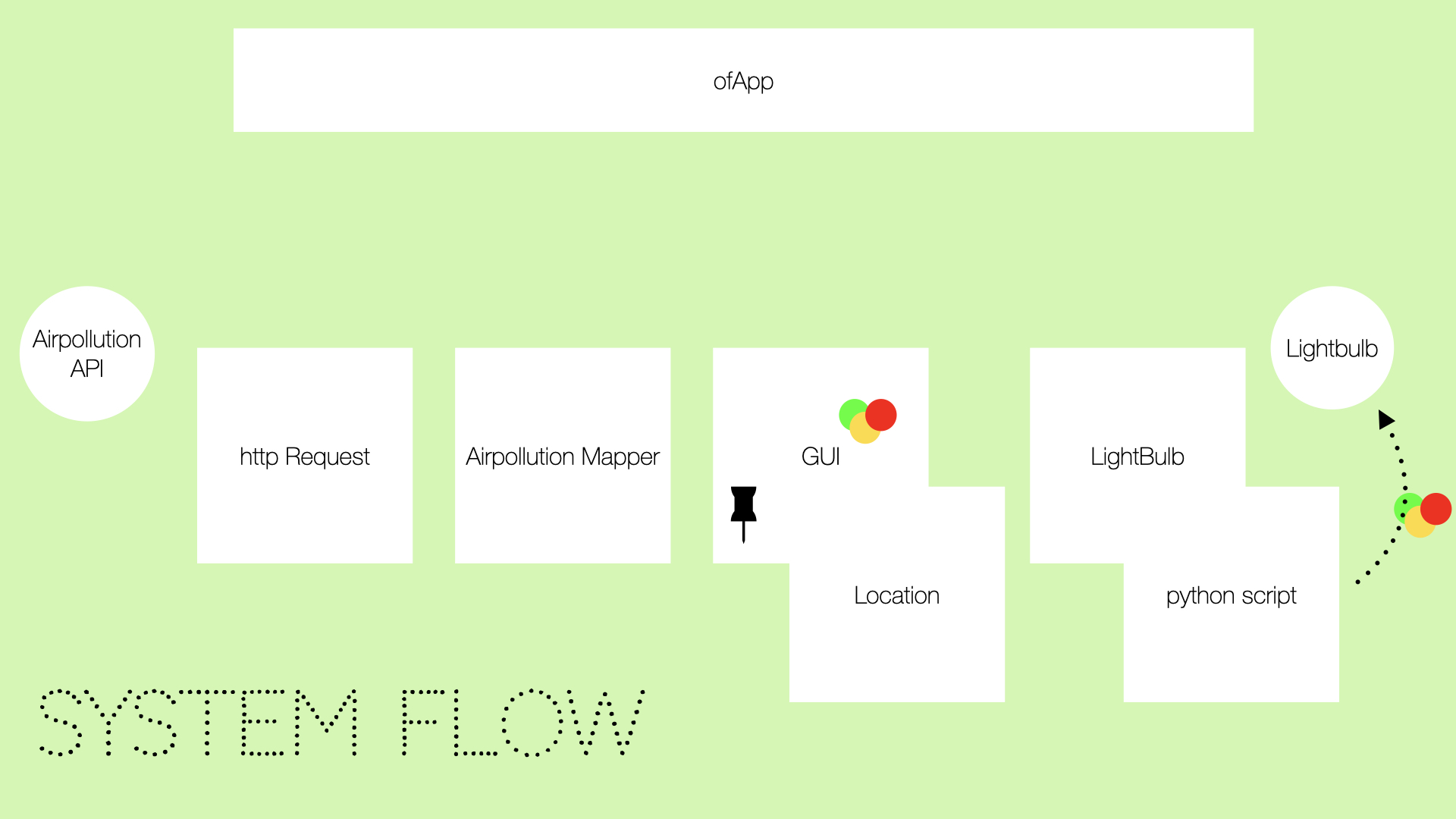
Lessons learned
- I learned a lot about different smart home systems. It was complicated to find a suitable library and a suitable light bulb.
- I learned about communication with different devices, because my program is mainly an interface between Air Pollution and the light bulb
- a challenge was the location, because I wanted the user to determine the location initially, which lead to a lot of hurdles. I think the solution with concentrating on Berlin is nice, but I would like to try to stretch the possible locations in the future
- some things about Air Pollution
- I learned how to call external Python Scripts with C++
